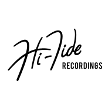JakeDobner

Joined: Feb 26, 2006
Posts: 12159
Seattle



|

Posted on Oct 12 2014 06:17 PM
What is everyone using? I always like experimenting with tone caps. I have some spec value orange drops at the moment but I am open to trying other things out.
I'm also very open to replacing the bright/hi-pass switch with something else. I'm putting a 4-way tele switch in, but the rhythm circuit is being replaced with an Esquire tone thickening switch for the bridge position. As I am using a Johnny Marr plate for that I have two switch spots open. I was thinking the Esquire and then a universal bright switch, but I never really use bright switches...
So, what values and which caps are you all using? And what does it do for the guitar?
Thanks!
|
SURFmole

Joined: Nov 22, 2007
Posts: 901
Portland, OR

|

Posted on Oct 13 2014 04:42 AM
The value makes a big difference, the cap makes no difference.
The only signal passing through the cap is going to ground and is bled off; an analogy would be replacing your drain pipe for better tasting faucet water. It makes no difference. Wire, pots, pickups, all make a difference. Tone caps on a guitar...none, with the exception of the value chosen.
The cap value affects how much treble is bled off so with a higher value (more bleed to ground) you'll have an overall darker tone. Here's an OK article: http://www.premierguitar.com/articles/auditioning-tone-capacitors-part-ii-2
The value of your tone pot affects the tone as well...I always mod my pots so that they're "no load" when cranked, which removes the tone pot and cap from the circuit entirely. You get a slight bit more output from your pickup and there's no loss of treble. http://www.projectguitar.com/tut/pots.htm
— www.apollo4.com
|
SlacktoneDave
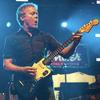
Joined: Jul 01, 2006
Posts: 657


|

Posted on Oct 13 2014 07:27 AM
Does this line of thinking about capacitors extend to amplifiers, too? Studio monitor crossover? I've even heard people say the shape/length of a capacitor, and what it's made of affect the outcome.
|
JakeDobner

Joined: Feb 26, 2006
Posts: 12159
Seattle



|

Posted on Oct 13 2014 09:45 AM
Scot! Great story, but which values do you like and why! Also, I'm going to be using 1M pots.
Last edited: Oct 13, 2014 09:59:25
|
JakeDobner

Joined: Feb 26, 2006
Posts: 12159
Seattle



|

Posted on Oct 13 2014 10:03 AM
|
JObeast

Joined: Jul 24, 2012
Posts: 2762
Finknabad, Squinkistan




|

Posted on Oct 13 2014 10:12 AM
Reading the article I see the benefit of the mod - a virtual EVH no pot guitar! Why isn't anyone selling these "infinity" pots readymade?
SURFmole wrote:*
The value makes a big difference, the cap makes no difference.
The only signal passing through the cap is going to ground and is bled off; an analogy would be replacing your drain pipe for better tasting faucet water. It makes no difference. Wire, pots, pickups, all make a difference. Tone caps on a guitar...none, with the exception of the value chosen.
The cap value affects how much treble is bled off so with a higher value (more bleed to ground) you'll have an overall darker tone. Here's an OK article: http://www.premierguitar.com/articles/auditioning-tone-capacitors-part-ii-2
The value of your tone pot affects the tone as well...I always mod my pots so that they're "no load" when cranked, which removes the tone pot and cap from the circuit entirely. You get a slight bit more output from your pickup and there's no loss of treble. http://www.projectguitar.com/tut/pots.htm
— Squink Out!
|
Stormtiger

Joined: Dec 12, 2006
Posts: 2688
Ventura, CA




|

Posted on Oct 13 2014 10:56 AM
On my Jaguar I'm using .22 cap with 250K tone pot, 290k Super pot on the volume. The main improvement for me has been allowing a full sweep of both pots instead of of everything dropping out as soon as I roll back. I've wired the guitar Wronski-style, like a Telecaster with a 3-way switch, no tone modification and bypassing the upper bout electronics. I haven't noticed any other dramatic changes.
|
mike_fried
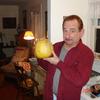
Joined: Aug 02, 2012
Posts: 162
Nashville, TN


|

Posted on Oct 13 2014 11:44 AM
JObeast wrote:
Reading the article I see the benefit of the mod - a virtual EVH no pot guitar! Why isn't anyone selling these "infinity" pots readymade?
Actually, they do! Google "no-load pots" and some sources will come up.
|
mike_fried

Joined: Aug 02, 2012
Posts: 162
Nashville, TN


|

Posted on Oct 13 2014 11:58 AM
SlacktoneDave wrote:
Does this line of thinking about capacitors extend to amplifiers, too? Studio monitor crossover? I've even heard people say the shape/length of a capacitor, and what it's made of affect the outcome.
The physical properties of caps (composition, size, etc,) do make much more of a difference when they pass signal in series connections, like they do in (passive) speaker crossovers and in an amp's stage coupling. The difference can be very obvious in using, say, Mallory 150s vs. Sprague orange drops to couple the output tubes to the phase inverter in a Fender amp.
Last edited: Oct 13, 2014 12:04:08
|
SURFmole

Joined: Nov 22, 2007
Posts: 901
Portland, OR

|

Posted on Oct 13 2014 01:12 PM
I'm not saying caps don't make a difference in guitar amps or speaker crossovers (they do IMO)...but buying an expensive cap for a guitar tone control makes no difference. Honestly, I don't use my tone control much (have the no load pot cranked so it's out of the circuit) but I think I have a .022 on my Strat and JM. I usually just go with whatever the Fender schematic lists for whichever guitar I wire. Unless you play with the tone fully rolled off, all the value really does is affect the taper and how quickly the pot turn changes the tone.
— www.apollo4.com
Last edited: Oct 13, 2014 13:14:16
|
BJB
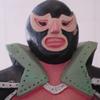
Joined: Jul 28, 2008
Posts: 413


|

Posted on Oct 14 2014 05:16 PM
SlacktoneDave wrote:
Does this line of thinking about capacitors extend to amplifiers, too? Studio monitor crossover? I've even heard people say the shape/length of a capacitor, and what it's made of affect the outcome.
Capacitors make a difference in large-signal applications where they are exposed to large DC and AC voltages. Guitars, however, are a small-signal application so the differences between capacitors will not be audible. The reasoning is difficult to explain without a lot of mathematics, but I'll give it a try.
If we could find a perfect capacitor, it would block DC voltages and pass AC signals without distortion (by 'distortion', I mean 'changing the shape of the signal', not Marshall stack distortion). A real-life capacitor is designed to minimize these effects but they will always be present.
The mathematical part I will skip is the part that shows that the effect on AC signals becomes insignificant when the signal is sufficiently 'small'. How 'small' is 'small' depends on the application for which the capacitor was designed. More on this later.
I hate to use analogies, but the effect can be compared to driving on a twisty road. If you go slowly (small-signal), your car goes around corners in a stable manner, but as you push your car harder (large-signal), the tires begin to squeal, the rear end starts to swing out, etc. The car stays on the road, though, but the faster you drive, the more the car will deviate from the ideal path.
To carry the analogy further, a sports car can take corners faster and with more stability than a pickup truck. But if we are limited to driving at 1 MPH, then both the pickup truck and sports car will follow the corners exactly the same. The differences between the truck and sports car only show up when driving hard. Obviously, driving on a twisty road at 100 MPH is going to be very different in the sports car vs. the pickup truck!
So this is why tone caps in guitars don't make a difference. I see vintage guitars with tone caps rated at 400V, but there's less than 1V signal out of the pickups. It's like buying a sports car that can go 400 MPH and then driving it at 1 MPH. You can drive a Smart car at 1 MPH and get the same result.
Now we can understand why capacitors make a difference in tube amps. The signals are much larger, plus, coupling capacitors will have 200 VDC or so across them even with no signal. The DC voltage stresses the capacitor and when a large signal is applied, we start to get 'interesting' behavior.
The large signals are analogous to driving at 100 MPH down the twisty road. Hi-fi amp designers don't want 'interesting' behavior, so we guitar people choose different capacitors than they do. Hi-fi amps should us 'sports car' capacitors that keep the signal clean while guitar amps need 'pickup truck' caps that mangle the signal in interesting way.
— If it ain't broke, fix it until it is.
|
CrashHardtop
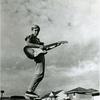
Joined: Jun 14, 2012
Posts: 152
Meridian, Idaho

|

Posted on Oct 14 2014 05:43 PM
Very cool explanation, BJB. Thanks for your input on this and many other topics.
— More cowbell?? Nah...More Reverb!!
|
SlacktoneDave

Joined: Jul 01, 2006
Posts: 657


|

Posted on Oct 15 2014 08:18 AM
I've made, literally, thousands of guitars. When the first Eric Johnson Strats were in my hands, I immediately noticed a completely different response of the Tone control than the thousands of others that came before. Why? It uses a large ceramic-style cap.
My Made in Japan white Jag while stock had a really crappy sounding capacitor that compromised the sound of the guitar greatly even when the Tone was full-up. I know it's still in the circuit... I do not like no-load pots. I clipped the cap, and the guitar sound improved. Then, I installed {I think} a Hovland cap, and it was great.
When the new Fender Vintage line came out, I immediately noticed the superiority of the Tone control performance compared to the other models. The Teles could do all of that Danny Gatton tone control craziness.
When using a coil, {guitar pickup}, components down the line seem to effect character of sound in my experience. That includes, Tone cap, cable, power tubes {even though I used to argue with techs back in the day who said, "all power tubes do is amplify, they will all sound the same".
|
Noel
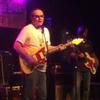
Joined: Mar 15, 2011
Posts: 8528
Back in Piitsburgh, Pennsylvania, where I grew up.




|

Posted on Oct 15 2014 08:39 AM
If I combine all the facts presented above, I take away the following: use a very low value cap which produces "interesting" signal distortion that sounds good in the guitar. So I would want to install the same caps Fender now use in their new AV series of guitars ('65 JM and Jag, & Strat) in my guitars, yes? If yes, how do I get them? Or what else that has the same result?
Or did I misunderstand something, everything?
— This is Noel. Reverb's at maximum an' I'm givin' 'er all she's got.
Last edited: Oct 15, 2014 08:42:09
|
SURFmole

Joined: Nov 22, 2007
Posts: 901
Portland, OR

|

Posted on Oct 15 2014 09:05 AM
Math doesn't matter w/ the guitar tone cap. It's not in the actual signal path, it just shunts the treble frequencies to ground (like my analogy above...mods to the drain pipe don't change the taste of the water).
Also, if you roll back the No-load pot to "9.8" you effectively have a standard tone control circuit; just something to consider if you're on the fence thinking of installing one.
I'm probably not the one to listen to however, because I usually prefer to have the tone cranked (or out of the circuit with a no-load pot) and change tone by changing pickups or using the tone pots on the amp.
Another thing I really like (and forgot to mention) is the "50's wiring" so that you don't lose too much treble when turning down the volume. It eliminates the need for a treble bleed cap. http://www.dominocs.com/AshBassGuitar/index.html?Gibson50s.html
— www.apollo4.com
|
CrazyAces
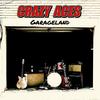
Joined: Jul 31, 2012
Posts: 4054
Buffalo, N.Y.





|

Posted on Oct 15 2014 09:55 AM
To answer Jake's question I almost always use cheap ceramic caps in my personal guitars, .050 or .047 in my Jag, Tele, .1 in my Strat. There is no rhythm circuit in my Jag.
In the guitars I build I use Mallory 150's, .047.
If you leave your tone control on ten and never use it don't sweat this stuff.
Cheers,
Jeff
— http://www.facebook.com/CrazyAcesMusic
http://www.youtube.com/user/crazyacesrock
http://www.reverbnation.com/crazyacesmusic
|
JakeDobner

Joined: Feb 26, 2006
Posts: 12159
Seattle



|

Posted on Oct 15 2014 10:00 AM
CrazyAces wrote:
To answer Jake's question I almost always use cheap ceramic caps in my personal guitars, .050 or .047 in my Jag, Tele, .1 in my Strat. There is no rhythm circuit in my Jag.
In the guitars I build I use Mallory 150's, .047.
If you leave your tone control on ten and never use it don't sweat this stuff.
Cheers,
Jeff
I can't really decide between a .022 and .047... I'm a tone knob user, tend to be 5-7. I have a bunch to use of different values.
|
CrazyAces

Joined: Jul 31, 2012
Posts: 4054
Buffalo, N.Y.





|

Posted on Oct 15 2014 10:07 AM
JakeDobner wrote:
CrazyAces wrote:
To answer Jake's question I almost always use cheap ceramic caps in my personal guitars, .050 or .047 in my Jag, Tele, .1 in my Strat. There is no rhythm circuit in my Jag.
In the guitars I build I use Mallory 150's, .047.
If you leave your tone control on ten and never use it don't sweat this stuff.
Cheers,
Jeff
I can't really decide between a .022 and .047... I'm a tone knob user, tend to be 5-7. I have a bunch to use of different values.
I've been there on a few personal guitars before. It was a little bit of a journey on some of my Danelectros. Get some alligator clips, run them outside the guard so you can try different values as you play. I use my tone controls a lot and this has helped me pick the best values for me.
— http://www.facebook.com/CrazyAcesMusic
http://www.youtube.com/user/crazyacesrock
http://www.reverbnation.com/crazyacesmusic
|
Bob_Kennedy

Joined: Feb 27, 2012
Posts: 316
Mesa, AZ.

|

Posted on Oct 16 2014 09:19 AM
JakeDobner wrote:
I can't really decide between a .022 and .047... I'm a tone knob user, tend to be 5-7. I have a bunch to use of different values.
Try a .033. It's a good middle-ground between the two.
— Otto & The Ottomans
Kennedy Custom Guitars
|
Tremeloverb
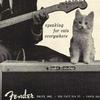
Joined: Apr 11, 2016
Posts: 13

|

Posted on Mar 01 2018 04:22 PM
Hi guys. Bringing back this thread. Looking to "upgrade" a Jaguar with the Pure Vintage 65 pickups. Along with the change, I figured I should also install new pots. Does anyone know what the AV65 Jaguar's stock 1MEG tone pot cap value is?
Last edited: Mar 01, 2018 16:27:42
|

































